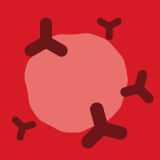Topic Editors


Inflammatory Tumor Immune Microenvironment
Topic Information
Dear Colleagues,
Cancer cells, as well as surrounding stromal and inflammatory cells, engage in well-orchestrated reciprocal interactions to form an inflammatory tumor microenvironment. The inflammatory tumor microenvironment plays multiple roles in different stages of tumor development, including tumorigenesis, primary tumor growth and distant metastasis. Cells within the tumor microenvironment are highly plastic, continuously changing their phenotypic and functional characteristics. High-throughput single-cell methods, including single-cell sequencing and mass spectrometry, have greatly improved the understanding of inflammatory tumor microenvironment in the past few years. Metabolic adaptation, epigenetic heterogeneity and post-translational modification continue to propel the conceptual advances of inflammatory tumor microenvironment. Given the critical involvement of the inflammatory tumor microenvironment in tumor development, investigations into the inflammatory tumor microenvironment may favor further development of anti-cancer therapies.
This Research Topic aims to shed light on inflammatory tumor microenvironment in tumorigenesis, primary tumor growth and distant metastasis. We welcome contributions in form of Original Research articles, Reviews and Mini-Reviews that cover but are not limited to the following topics related to inflammatory tumor microenvironment in cancer:
- Inflammation-manipulated immune cell plasticity within the tumor microenvironment.
- Inflammation-involved immune exhaustion in cancer.
- Mechanisms of inflammatory leukocytes accumulation in tumor microenvironment.
- Metabolic adaptation of inflammatory cells in tumor microenvironment.
- Targeting pro-tumoral inflammation in tumor therapy.
- Signaling pathways of inflammation-induced tumorigenesis.
- Plasticity of the pre-metastatic microenvironment.
- Functions and mechanisms of action of inflammatory cytokines in the tumor microenvironment.
- Epigenetic modifications in the tumor microenvironment.
- Immune checkpoints in tumor microenvironment.
- Development of tumor-related markers (diagnostic, surveillance, prognostic and immune checkpoints).
Dr. William Cho
Dr. Anquan Shang
Topic Editors
Keywords
- tumor microenvironment
- immune microenvironment
- inflammation
- neutrophil
- macrophage
Participating Journals
| Journal Name | Impact Factor | CiteScore | Launched Year | First Decision (median) | APC | |
|---|---|---|---|---|---|---|

BioMedInformatics
|
- | - | 2021 | 21 Days | CHF 1000 | Submit |

Cancers
|
5.2 | 7.4 | 2009 | 17.9 Days | CHF 2900 | Submit |

Cells
|
6.0 | 9.0 | 2012 | 16.6 Days | CHF 2700 | Submit |

Diagnostics
|
3.6 | 3.6 | 2011 | 20.7 Days | CHF 2600 | Submit |

Immuno
|
- | - | 2021 | 20.7 Days | CHF 1000 | Submit |

International Journal of Molecular Sciences
|
5.6 | 7.8 | 2000 | 16.3 Days | CHF 2900 | Submit |

MDPI Topics is cooperating with Preprints.org and has built a direct connection between MDPI journals and Preprints.org. Authors are encouraged to enjoy the benefits by posting a preprint at Preprints.org prior to publication:
- Immediately share your ideas ahead of publication and establish your research priority;
- Protect your idea from being stolen with this time-stamped preprint article;
- Enhance the exposure and impact of your research;
- Receive feedback from your peers in advance;
- Have it indexed in Web of Science (Preprint Citation Index), Google Scholar, Crossref, SHARE, PrePubMed, Scilit and Europe PMC.

